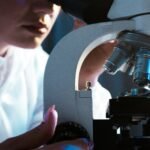Phone:
(+65)8319 0742
Emails address:
Forhad@ifafs.in

Nanofabrication techniques have revolutionized various fields, including pharmaceuticals and medicine. These techniques allow for the mass production of systems with complex geometries and functionalities, such as drug delivery systems and biosensors. Some of the main micro- and nanofabrication techniques include photolithography, soft lithography, film deposition, etching, bonding, self-assembly, and focused ion beam lithography. These techniques have been applied to the fabrication of drug delivery and biosensing systems, including injectable, implantable, transdermal, and mucoadhesive devices.
Micro- and nanodevices offer numerous advantages over their larger counterparts. These devices can be miniaturized and made portable, handheld, implantable, or even injectable, providing unprecedented versatility in their applications. The small size of micro- and nanodevices also presents several benefits:
By capitalizing on the advantages offered by micro- and nanodevices, researchers and industries can unlock new possibilities in fields such as medicine, electronics, and materials science.
| Advantages of Micro- and Nanodevices | Applications |
|---|---|
| 1. Reduced Sample and Reagent Consumption | Analysis and experimentation |
| 2. Accelerated Diffusion Times | Diagnostics, drug delivery systems |
| 3. Point-of-Care Diagnostic Testing | Healthcare, medical diagnostics |
Micro- and nanofabrication techniques have unlocked a whole new realm of possibilities in the field of medical devices. These techniques have proven invaluable in studying intricate chemical, biological, and physical processes at the cellular and molecular scale. By harnessing the power of micro- and nanofabrication, scientists and engineers have created synthetic devices that interact seamlessly with biological systems, paving the way for innovative medical advancements.
One of the key applications of micro- and nanofabrication in medical devices is the development of nanodevices capable of substance detection, environmental analysis, and targeted molecule release. These specialized devices incorporate a combination of responsive polymers, nanoparticles, nucleotides, and micro-electromechanical systems (MEMS) elements. Their integration enables precise control and manipulation at the nanoscale, allowing for enhanced functionality and specificity.
Microfabrication techniques have also led to the creation of controlled release systems and responsive delivery systems in medical devices. These systems offer precise and customizable drug delivery mechanisms, ensuring that therapeutic agents reach their intended targets efficiently. By optimizing drug delivery, microfabrication techniques contribute to improved treatment outcomes and patient care.
Let’s take a closer look at some specific applications of micro- and nanofabrication in medical devices:
Nanosensors are devices that detect and measure physical, chemical, or biological signals at the nanoscale. These sensors play a crucial role in various medical applications, such as disease diagnosis, environmental monitoring, and drug discovery. Micro- and nanofabrication techniques enable the creation of highly sensitive and selective nanosensors that can accurately detect and quantify target analytes. These sensors can be integrated into wearable devices or implantable technologies, offering real-time monitoring and diagnostics.
Biosensors are devices that combine a biological element with a transducer to detect and analyze a specific biological or chemical compound. Micro- and nanofabrication techniques allow for the precise fabrication of biosensor components, enhancing their sensitivity and selectivity. Biosensors find extensive application in clinical diagnostics, food safety, and environmental monitoring. They enable rapid and accurate detection of biomarkers, pathogens, and toxins, facilitating early disease detection and monitoring.
Lab-on-a-chip devices integrate multiple laboratory functions onto a small microchip, enabling rapid and automated analysis of biological samples. Micro- and nanofabrication techniques are instrumental in the fabrication of these devices. This technology has revolutionized diagnostics by enabling point-of-care testing, reducing the turnaround time for test results. Lab-on-a-chip devices have applications in a wide range of medical fields, including infectious disease detection, genetic screening, and cancer diagnostics.
To summarize, micro- and nanofabrication techniques have found diverse applications in the development of medical devices. These techniques facilitate the design and fabrication of sophisticated nanodevices, nanosensors, biosensors, and lab-on-a-chip technologies. By harnessing the power of micro- and nanofabrication, scientists and engineers are pushing the boundaries of medical innovation, leading to improved diagnostics, targeted therapies, and better patient outcomes.
When it comes to fabricating micron-scale devices, several techniques come into play. These techniques can be broadly categorized into two groups: those borrowed from the semiconductor industry and those specifically designed for microfabrication. In the world of microfabrication, a few notable techniques stand out, including photolithography, soft lithography, film deposition, etching, and bonding.
Photolithography, a technique commonly used in microfabrication, involves transferring a pattern onto a material using a light-sensitive polymer. This process allows for precise replication of intricate designs, making it an essential tool for creating micron-scale devices.
“Photolithography enables the precise transfer of intricate patterns onto materials, laying the foundation for the creation of advanced microdevices.” – Expert in Microfabrication Techniques
Soft lithography, on the other hand, relies on the use of a mold made of poly(dimethylsiloxane) to generate microstructures. By utilizing this flexible mold, researchers and engineers can fashion complex microdevices with ease.
Another technique commonly employed in microfabrication is film deposition. This process involves the formation of thin films on the surface of a substrate. These films can exhibit specific properties, such as conductivity or insulation, depending on the desired application.
Etching is another crucial technique that selectively removes materials from the surface of a microdevice. By precisely removing specific areas, engineers can create intricate features and patterns, allowing for the creation of highly functional micron-scale devices.
Bonding is the final key technique in microfabrication, as it allows different substrates to be adhered together. This enables the integration of various materials, facilitating the creation of complex and multi-functional microdevices.
| Technique | Description | Advantages | Disadvantages |
|---|---|---|---|
| Photolithography | Transfers a pattern onto a material using a light-sensitive polymer | – High precision replication of patterns – Large-scale fabrication capability | – Expensive equipment – Limited resolution for sub-micron features |
| Soft Lithography | Uses a flexible mold to generate microstructures | – Versatile and cost-effective – Offers rapid prototyping capabilities | – Limited scalability for mass production – Mold wear and tear |
| Film Deposition | Forms thin films on a substrate’s surface | – Can impart specific properties to the substrate – Versatility in materials used | – Requires specialized equipment – Film thickness control can be challenging |
| Etching | Selectively removes materials from the surface of a microdevice | – Creates precise features and patterns – Enables microdevice miniaturization | – Limited control over etch depth – Higher material wastage |
| Bonding | Adheres different substrates together | – Allows integration of various materials – Facilitates complex device designs | – Surface preparation challenges – Bonding defects |
Each microfabrication technique brings its own set of advantages and limitations, making them suitable for different applications. By understanding the nuances of these techniques, researchers and engineers can design and fabricate intricate microdevices that push the boundaries of what is possible.
Photolithography is a widely used technique in microfabrication that allows for the precise transfer of patterns onto materials. It involves utilizing a light-sensitive polymer and ultraviolet (UV) light to create intricate designs on a substrate. This process plays a crucial role in the production of microdevices and integrated circuits.
To understand how photolithography works, let’s break down the steps involved:
Popular photoresists used in photolithography include SU-8, which offers high-resolution capabilities and excellent mechanical stability. With its versatility and widespread adoption, photolithography continues to be the go-to technique for microfabrication in various industries.
Ultrasonic vibration-assisted nanomachining is a high-precision 3D nanofabrication method. This approach utilizes an Atomic Force Microscope (AFM) operating in constant height control mode and a polymer film. Through the use of ultrasonic vibration, precise nanomachining is achieved.
The AFM tip vibrates either with the z-piezo at a low frequency or without the z-piezo in ultrasonic frequency, allowing for the regulation of feature depth and the reduction of frictional forces. This results in the creation of highly accurate and detailed nanostructures.
To demonstrate the effectiveness of the ultrasonic vibration-assisted nanomachining technique, SEM images of the AFM tip can be observed:
These images showcase the precision and intricacy achieved through the combination of ultrasonic vibration and nanomachining.
Molecular electronics is a fascinating field that involves the design and development of electronics using nanosized building blocks. With its roots in chemistry, physics, and materials science, molecular electronics has paved the way for the creation of integrated circuits and electronic devices on a molecular scale.
One of the remarkable advantages of molecular electronics is the lightweight, small size, and flexibility of the resulting systems. These characteristics have made them increasingly popular for electronic devices, especially in applications where space is limited.
Nanomaterials play a crucial role in molecular electronics. These materials exhibit different characteristics, behaving as both semiconductors, conductors, and insulators. This versatility makes nanomaterials well-suited for various molecular electronics applications.
To illustrate the potential of molecular electronics, consider the example of molecular transistors. By utilizing individual molecules as the active component of a transistor, researchers have achieved miniaturized devices that outperform traditional silicon-based transistors in terms of size and performance. This breakthrough suggests a promising future for molecular electronics in advancing computing and communication technologies.
Molecular electronics offers several advantages over conventional electronics:
The potential applications of molecular electronics are vast, ranging from high-performance computing and telecommunications to biomedical devices and energy harvesting systems. Continued research and innovation in this field will undoubtedly unlock new and exciting opportunities for technological advancements.
“Molecular electronics holds the key to revolutionizing the way we think about electronics. By leveraging the unique properties of nanoscale materials, we are opening doors to unprecedented levels of miniaturization and functionality.” – Dr. Lisa Thompson, Materials Scientist
| Field | Application |
|---|---|
| Computing | Molecular transistors, nanoscale memory devices |
| Biomedical | Implantable sensors, drug delivery systems |
| Energy | Photovoltaics, energy storage |
| Sensors | Nanosensors for environmental monitoring, food safety |
Nano-fabrication techniques have revolutionized medicine by offering innovative solutions in the fabrication of nanosensors, nanoelectronics, and nanomedicine devices. These techniques enable the production of smaller and more efficient medical devices that have a significant impact on patient care and treatment outcomes.
Nanoparticles, a key component of nano-fabrication techniques, play a crucial role in drug delivery systems and imaging. By designing nanoparticles to target specific cells or tissues, medical professionals can improve the efficacy of treatment and minimize side effects. This targeted approach allows for precise drug delivery to the desired location, maximizing therapeutic benefits while minimizing harm.
Moreover, nano-fabrication techniques have paved the way for the development of nanosensors that offer real-time monitoring of various physiological parameters. These nanosensors can provide valuable insights into a patient’s health condition, enabling early diagnosis and intervention. With continuous advancements in nano-fabrication, nanoelectronics are being integrated into medical devices, opening up new possibilities for personalized healthcare and remote patient monitoring.
To illustrate the impact of nano-fabrication techniques in medicine, consider the following table:
| Application | Description |
|---|---|
| Drug Delivery Systems | Nano-fabrication techniques enable the design of nanoparticles that can encapsulate drugs and deliver them to specific target sites in the body, enhancing therapeutic efficacy and reducing side effects. |
| Imaging | Nano-fabricated contrast agents enhance the resolution and sensitivity of medical imaging techniques, enabling precise visualization of diseased tissues and guiding treatment decisions. |
| Nanosensors | Nano-fabrication techniques facilitate the development of nanoscale sensors that can detect and monitor various biological markers, providing real-time data for disease diagnosis and management. |
| Regenerative Medicine | Nano-fabricated scaffolds and biomaterials promote tissue regeneration and repair by mimicking the natural extracellular matrix and providing a suitable environment for cell growth and differentiation. |
Overall, nano-fabrication techniques have revolutionized medicine, enabling the production of advanced medical devices, targeted drug delivery systems, and precise diagnostic tools. As technology continues to evolve, nano-fabrication holds great promise for the future of healthcare, offering improved treatment outcomes and enhanced patient care.
Nanomaterials possess unique properties that are attributed to various factors, including surface effects and quantum physics. These distinct characteristics make them particularly valuable in a wide range of applications.
One key aspect of nanomaterials is the increase in the proportion of surface atoms compared to their bulk counterparts. This higher surface area-to-volume ratio leads to enhanced reactivity and altered chemical and physical properties. The presence of a greater number of surface atoms enables nanomaterials to exhibit improved catalytic activity, increased adsorption capacity, and enhanced mechanical properties.
Nanomaterials also venture into the realm of quantum physics, where their behavior is governed by the principles of quantum mechanics. In bulk materials, atoms are densely packed, and their energy bands form continuous levels. However, on the nanoscale, energy bands get fragmented into discrete energy levels, creating unique optical and electrical properties.
Quantum nanomaterials offer exciting possibilities due to their exceptional properties. For instance, quantum dots, which are nanoscale semiconductor particles, exhibit size-dependent fluorescence, making them useful in applications such as imaging and biotechnology. Carbon nanotubes, another type of quantum nanomaterial, possess extraordinary strength, high electrical conductivity, and thermal stability, leading to their applications in electronics, energy storage, and composite materials.
The distinctive properties of nanomaterials stem from their nanoscale dimensions, surface effects, and quantum behavior. These characteristics open up a wide range of opportunities for the development of innovative technologies and materials with enhanced performance and functionality.
Nanofabrication techniques have diverse applications across multiple industrial sectors, including electronics, energy, medicine, and materials science. These techniques enable the development of innovative devices and structures with enhanced performance, efficiency, and precision.
Nanotechnology plays a significant role in the electronics industry, driving advancements in device miniaturization and efficiency. Through nanofabrication, smaller and more efficient devices like transistors and memory components are created. These technological advancements enable the production of compact and high-performance electronic devices.
Nanomaterials contribute to the improvement of energy technologies by enhancing the performance of batteries, fuel cells, and solar cells. Through nanofabrication techniques, these materials can be engineered with tailored properties, such as improved conductivity and stability. This results in more efficient and sustainable energy storage and conversion systems.
Nanofabrication techniques have revolutionized the field of medicine, offering precise control over targeted drug delivery and the development of nanosensors. By utilizing nanotechnology, medical devices can be designed to interact with specific cells or tissues, improving the efficacy of treatment and diagnostics. Nanosensors enable the detection and analysis of biomarkers, allowing for early disease detection and monitoring.
Nanofabrication techniques are employed to create innovative structures and materials with unique features in the field of materials science. By manipulating materials at the nanoscale, researchers can engineer advanced materials with tailored properties. These materials exhibit exceptional characteristics, such as enhanced strength, conductivity, and responsiveness. The applications of nanofabrication in materials science are wide-ranging, spanning from aerospace to construction.
Overall, nanofabrication techniques have revolutionized various industries, contributing to the development of smaller, more efficient, and precise technologies. By harnessing the power of nanotechnology, industries can explore new possibilities and push the boundaries of innovation.
Nanofabrication has revolutionized various fields, from medicine to electronics. By harnessing the power of nanoscale construction, nanofabrication has produced smaller, more efficient, and more precise technologies. Through techniques such as photolithography and the emerging field of molecular electronics, nanofabrication continues to push the boundaries of what is possible in the world of nanotechnology. Ongoing research and development in this field will undoubtedly lead to further advancements, opening up new applications and shaping the future of various industries.
The ability to construct devices on the nanoscale has brought significant benefits to medicine. Nanofabrication techniques have enabled the fabrication of nanosensors, nanoelectronics, and nanomedicine devices, thereby improving the efficacy of drug delivery systems, imaging, and medical device efficiency. The electronics industry has also greatly benefitted from nanofabrication, as it allows for the development of smaller and more efficient devices such as transistors and memory components. Moreover, nanomaterials and nanofabrication techniques have found applications in the energy sector, enhancing the performance of batteries, fuel cells, and solar cells.
The future of nanofabrication looks promising, with ongoing advancements in research and development. As this field evolves, we can expect to see even more precise and efficient technologies emerge. Nanofabrication will continue to find new applications in fields such as medicine, electronics, energy, and materials science. By pushing the boundaries of what is possible, nanofabrication is shaping the future and driving innovation in various industries, improving the quality of life and opening up new possibilities for the advancement of human civilization.
Here we answer some of the most common questions about these new innovation





